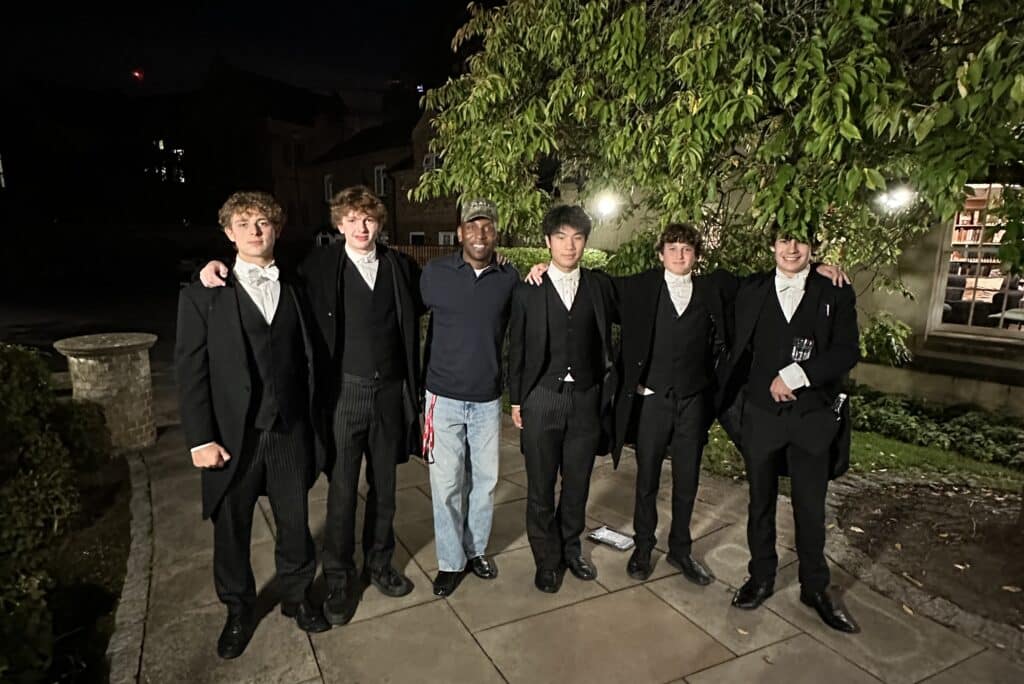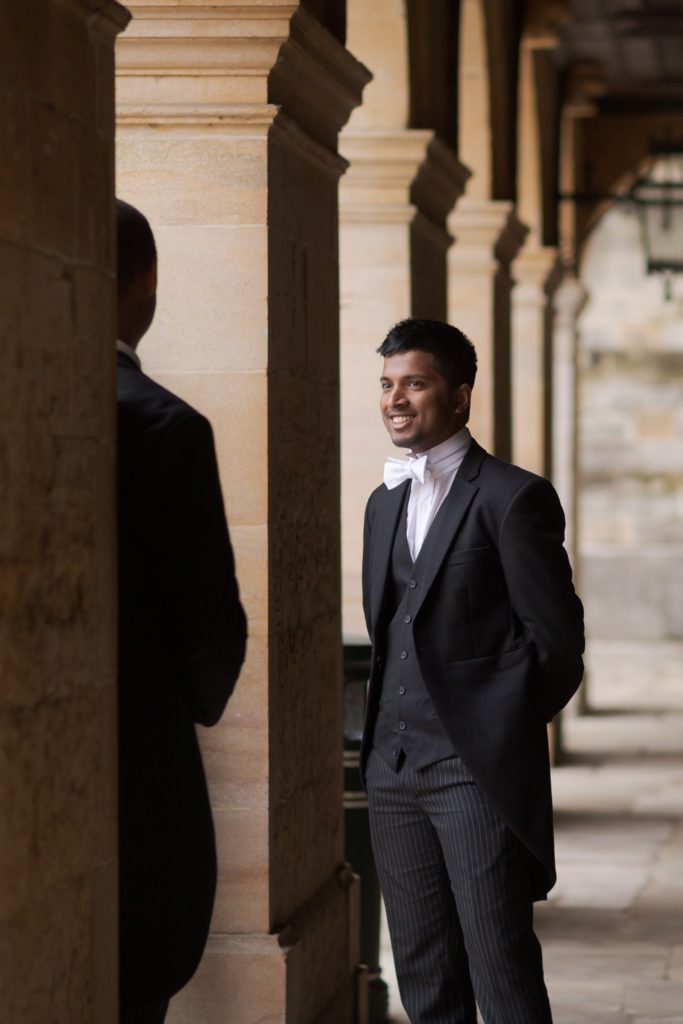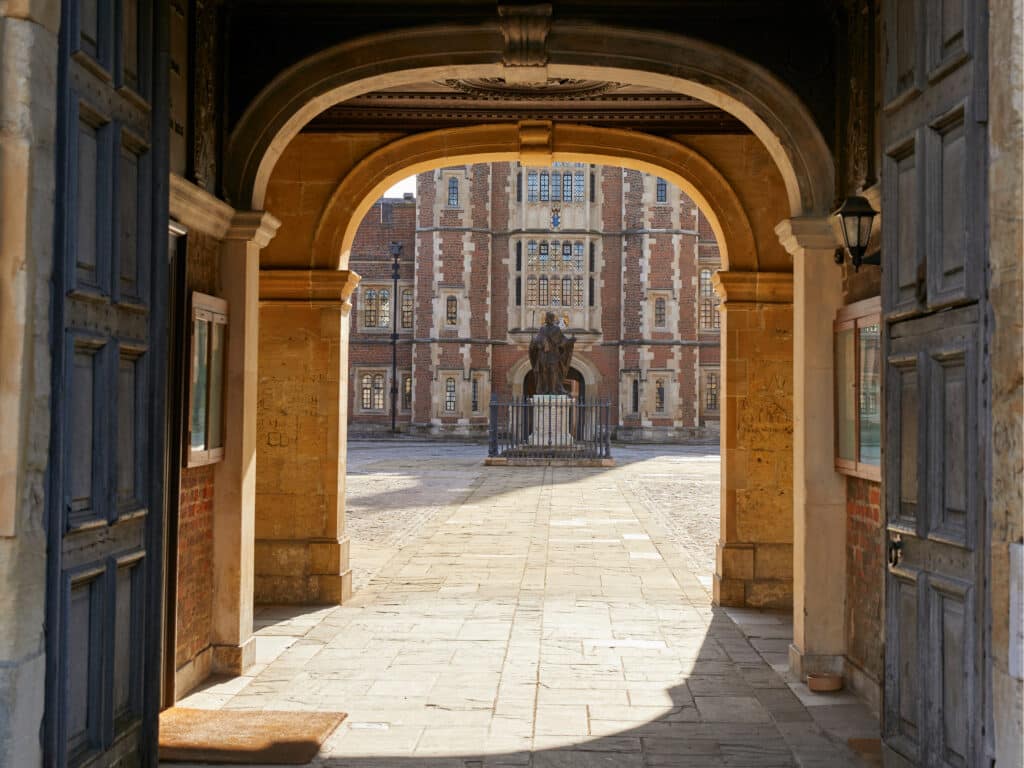From 10-12 October, after a conspicuous absence, musical theatre made its triumphant return to the Farrer Theatre in the 2025 Michaelmas School Play: West Side Story. The iconic adaptation of Romeo and Juliet set against the backdrop of 1950s New York City, has won three Tony Awards, 11 Oscars and the hearts of millions of theatre-goers and music-lovers alike.
You could say these were some big shoes to fill for our 100-strong company, who worked since April under the inspired direction of Rebecca Farley, Director of Drama, to bring a piece of Manhattan, conceived by Jerome Robbins and electrified by Leonard Bernstein’s beloved score, to life.
For the rival Jet and Shark gangs, rehearsals began in May. After a rigorous audition process encompassing singing, dancing and acting, 24 boys turned up to the Rehearsal Room to begin their transformations. Attempting to coax virtual novice dancers into lifts, leaps and partner work is no mean feat, but an even braver choice is to trust them to create with you.
From day one, we were each asked to develop our own signature phrase, originally based on our gang member’s name, to weave throughout the show. This set the tone for the coming months; each actor was pushed to give their own energy and thought to the piece, so that individuality and spark are visible even in unison.
However, by no means did the choreography come to fruition on its own. Mrs Farley and longtime colleague Neil Fisher not only teased our own ideas out of us, but also taught us an exhaustive array of steps, paths, shapes (and yes, the famous clicks) that form the backbone of West Side’s magic language of dance.
If you ask your average person about West Side Story, chances are they’ll sing. Songs like Maria, Gee Officer Krupke and America have transcended the show, making their mark on popular culture, and this production could not have got off the ground without getting them right. Ms Kemp, Head of Singing, was always on hand to guide the cast through the trickiest intervals, time signatures and harmonies, all while reminding us of the fiery messages in Sondheim’s brilliant lyrics.
But Bernstein’s genius doesn’t stop at songwriting—just ask the band. The 20 boys who soundtracked the onstage action, conducted by Mr Silvera, were in rehearsals for almost as long as the cast themselves, and it showed.
The Tuesday before show week, the cast had our first opportunity to sing with a full orchestra at the sitzprobe (an opera term for a static singing rehearsal with band). As our leads showed off their prodigious talent, both the orchestra and cast caught a glimpse of where this show could go, which spurred us onto our final run-through before tech rehearsals.
Tech, as every actor knows, is the most laborious stage of any rehearsal process. Painstakingly repetitive, it involves coordinating lighting, sound and stage directions with scenes, and so was a daunting prospect for our company. To tide the cast over, we had the treat of trying on our costumes before the final pre-tech run-through. Seeing the actors decked out in ‘50s garb brought West Side’s world closer than ever before.
As I spoke to Jesse Welland-Hammond, Head of Wardrobe for the Farrer, I got a sense of the challenge and excitement of dressing such an immense piece. She explained how colour was used to divide the gangs: warmer reds and purples for the Sharks, and cooler blues and greens for the Jets.
Asking about her inspiration for creating the mid-century look, the fun she had in the process was clear: “I looked at 1950s icons like Elvis Presley, I’ve got them on my moodboard, and that’s where I started to get the idea of the coolness of the ‘50s for the gangs.”
She said that her biggest consideration when working on musical theatre rather than straight plays is accommodating movement, especially in the girls’ dresses. The scene she was most excited to see costumed on stage is the Dance at the Gym sequence. She adds that “with a live band, it’s the enjoyment of it having to work. [A musical] is pure live theatre”.
This recognition of the interplay between different elements of the show was also important for the set, Designer Roma Farnell explained. “It felt important that the colour, life and fluidity of the piece would be brought to the space by the people that inhabit it,” she said, pointing out that “the design came from wanting to reflect the themes of love and violence in the play”.
She said that the industrial look represents an amalgamation of a building site and a ‘50s playground, suggesting a world without safe spaces for young people, but which they “are able to blossom from nonetheless”. During rehearsals, the gangs did exactly that; the set was used as an obstacle course, jungle gym, combat arena and everything in between.
As the Jets and Sharks readied themselves for the fight to end all fights, they brought to an end a journey like no other. Sunday capped off six months of collective effort, and a special thanks must be given to the extraordinary commitment of the cast’s girls: our Maria, Anita, Shark and Jet girls.
For Millie S, from Bartholomew School in Oxfordshire, the experience was “nothing but inspiring… I’ve been able to thrive in a professional theatrical environment… fully dedicated to making this show to the highest standard”. Nowhere is this dedication more visible than in Mrs Farley herself, whose extraordinary work ethic took this show from idea to reality. As a company, we owe her an immense debt of gratitude.
Indeed, the camaraderie the cast built is entirely unique to working on musical theatre, and has brightened every hour spent in the West Side world—in Anita’s words, we like to be in America, and we sincerely hope audiences did too.



